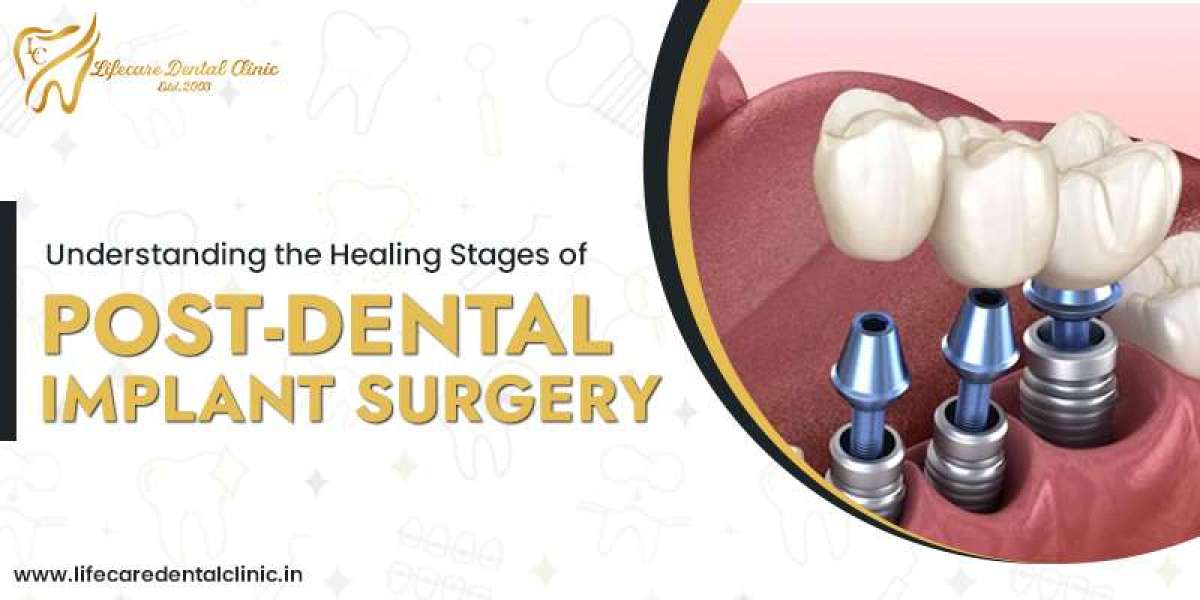Understanding the stages of healing post-dental implant surgery is essential for patients to have realistic expectations about the procedure. In this, we will discuss various aspects of dental implant surgery, including its purpose, types, healing process steps, possible complications, and how to address them.
Dental Implant Surgery and Its Purpose
Dental implant surgery in Chandigarh involves the insertion of a titanium post into the jawbone, serving as an artificial tooth root that supports dental prostheses such as crowns or bridges. This procedure aims to restore function and aesthetics to patients who have lost one or more teeth due to injury, decay, or gum disease. Dental implants provide several advantages over traditional dentures or bridges, including improved chewing efficiency and prevention of bone loss in the jaw.
Types of Dental Implants
There are two main types of dental implants in tricity i.e., endosteal and subperiosteal.
1. Endosteal implants: Endosteal implants are placed directly into the jawbone and are the most common type of dental implant.
2. Subperiosteal implants: Subperiosteal implants are placed under the gum but above the jawbone. This option is suitable for patients with insufficient bone height or who cannot wear conventional dentures.
Dental Implant Healing Process
The healing process of post-dental implant surgery can be divided into three main stages:
1. Initial Recovery Stage: This stage occurs immediately after surgery and lasts for about 7 to 10 days. During this time, swelling and discomfort near the implant site may be experienced. Patients should follow their dentist's instructions regarding proper oral hygiene and care during this stage to avoid infection.
2. Osseointegration: This is a critical phase in which the implant fuses with the surrounding bone tissue. It occurs over several months (typically 2-6 months) and forms a solid foundation for the prosthetic tooth. Throughout this process, it is essential to maintain proper oral hygiene and attend follow-up appointments with the dentist.
3. Final Recovery: The last stage involves the attachment of the dental prosthesis (crown or bridge) to the implant post. Once this is complete, the patient can enjoy the full functionality and appearance of their new tooth.
Possible Complications and How to Address Them
Though dental implant surgery boasts a high success rate, complications can arise in some cases. Common issues include infection, implant loosening or failure, and damage to nearby structures such as nerves. Patients should promptly inform their dentist if they experience any unusual symptoms during the healing process.
Most complications can be addressed effectively if caught early. For example, infections can be mitigated using antibiotics, while implant loosening may require minor adjustments or in severe cases, removal and reinsertion of the implant.
Conclusion
Understanding the healing stages of post-dental implant surgery is crucial for managing expectations and ensuring a smooth recovery process. Patients should be aware of the different stages, including blood clot formation, initial bone and soft tissue healing, osseointegration, and prosthetic attachment. By following the dentist's post-operative care instructions, maintaining good oral hygiene, and attending regular follow-up appointments, patients can expect optimal healing and enjoy the long-term benefits of their dental implants. Additionally, recognizing signs of possible complications such as infection or implant failure will enable patients to seek timely professional intervention and minimize any negative impact on the overall outcome of their dental implant journey.








